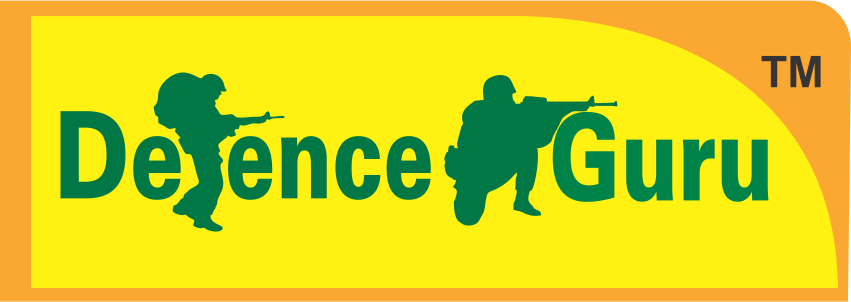The UPSC conducts a national-level entrance test, popularly known as the NDA examination, for admission of the eligible defence aspirants into the prestigious National Defence Academy. The NDA examination is conducted twice a year by the Union Public Service Commission. The exam is divided into three stages including a written test, SSB Interview, and the medical examination. The written exam is the primary stage for selecting the qualified candidates for further rounds. Due to a huge number of applicants, the NDA written exam is quite competitive in nature and thus it requires an extensive preparation to achieve success.
The NDA written examination consists of two sections, Mathematics and GAT (General Ability Test). In this article, we will discuss in detail particularly about the syllabus, exam pattern, and the marking scheme of the GAT section of the NDA written examination. Moreover, to help NDA aspirants score maximum marks, we are also providing the GAT Model Question Paper designed by our experts after an extensive research of the NDA exam pattern.
NDA-II 2021 GAT Syllabus
The General Ability Test - GAT section of the NDA written examination is further divided into two parts, English and General Knowledge. Out of 150 objective questions asked in the GAT section, 50 questions belong to English and the remaining 100 questions are asked from General Knowledge. The GK part comprises questions from Physics, Chemistry, General Science, Social Studies, Geography, and the Current Events. An in-depth knowledge of the NDA-II 2021 GAT syllabus will help candidates to prepare accordingly for the written examination to score adequate marks.
NDA-II 2021 GAT Syllabus - English Part
-
Reading Compression
-
Grammar and Vocabulary
-
Synonyms and Antonym
-
Idioms and Phrases
-
One word substitutions
-
Para Jumbles
-
Spotting the Errors
-
Sentence Sequencing
NDA-II 2021 GAT Syllabus - General Knowledge Part
Physics:-
-
Physical Properties and States of Matter
-
Principle of Archimedes
-
Mass, Weight, Volume
-
Density and Specific Gravity
-
Velocity and Acceleration
-
Newton’s Laws of Motion
-
Stability and Equilibrium of Bodies
-
Sound waves and their Properties
-
Reflection and Refraction
-
Spherical Mirrors and Lenses
-
Natural and Artificial Magnets
-
Static and Current Electricity
-
Conductors and Non-conductors
-
Ohm’s Law
-
Measurement of
-
Electrical Power
-
Primary and Secondary Cells
-
Use of X-Rays
Chemistry:-
-
Physical and Chemical Changes
-
Symbols, Formulae and Simple Chemical Equations
-
Elements, Mixtures and Compounds
-
Law of Chemical Combination
-
Preparation and Properties of Hydrogen, Oxygen, Nitrogen and Carbon-dioxide
-
Properties of Air and Water
-
Oxidation and Reduction
-
Acids, Bases and Salts
-
Fertilizers—Natural and Artificial
-
Elementary Ideas about the Structure of Atom
-
Atomic Equivalent and Molecular Weights, Valency
General Science:-
-
Difference Between the Living and Non-living
-
Basis of Life—Cells, Protoplasm and Tissues
-
Common Epidemics - Causes and Prevention
-
Growth and Reproduction in Plants and Animals
-
Elementary Knowledge of the Human Body and its Important Organs
-
Constituents of Food & Balanced Diet
-
The Solar System—Meteors and Comets, Eclipses
Social Studies:-
-
Indian History - Culture and Civilisation
-
Freedom Movement in India
-
Elementary Knowledge of Five Year Plans of India
-
Elementary Study of Indian Constitution and Administration
-
Panchayati Raj, Co-operatives and Community Development
-
Basic Teachings of Mahatma Gandhi
-
Bhoodan, Sarvodaya, National Integration and Welfare State
-
Renaissance, Exploration and Discovery
-
War of American Independence
-
French Revolution
-
Industrial Revolution and Russian Revolution
-
Impact of Science and Technology on Society
-
United Nations Organization (UNO)
-
Concept of One World
-
Panchsheel, Democracy, Socialism and Communism
-
Role of India in the Present World
-
Achievements of Eminent Scientists
Geography:-
-
The Earth - Shape and Size
-
Latitudes and Longitudes
-
Concept of Time
-
International Date Line
-
Movements of Earth and their Effects
-
Origin of Earth
-
Rocks & Classifications - Weathering, Mechanical and Chemical
-
Ocean Currents and Tides
-
Earthquakes and Volcanoes
-
Atmosphere and its Composition
-
Temperature and Atmospheric Pressure
-
Planetary Winds, Cyclones and Anti-cyclones
-
Humidity, Condensation and Precipitation
-
Types of Climate
-
Major Natural Regions of the World
-
Regional Geography of India—Climate & Natural Vegetation
-
Mineral and Power Resources
-
Location and Distribution of Agricultural and Industrial Activities
-
Important Sea Ports and Main Sea
-
Land and Air Routes of India
-
Main Items of Imports and Exports of India
Current Events:-
-
Important National Happenings and Events
-
Important International Happenings and Events
-
Current Important World Events
-
Prominent Personalities - Indian and International
-
Sports and Awards
-
Heritage and Culture
NDA-II 2021 GAT Exam Pattern & Marking Scheme
|
Particulars |
Details |
|
Parts |
English and General Knowledge |
|
Number of Questions |
English - 50 General Knowledge - 100 |
|
Maximum Marks |
English - 200 General Knowledge - 400 |
|
Positive Marking |
04 marks for every correct option |
|
Negative Marking |
1.33 marks for every incorrect option |
|
Time Duration |
2 Hours 30 Minutes |
NDA-II 2021 GAT Model / Sample Test Paper
We hope that the above article on NDA-II 2021 GAT Pattern is understood to you. Find below the pdf of NDA-2-22021 GAT Model/ Sample Question Paper will help you to understand the exam pattern and the difficulty level of the questions to score well in the exam.
If you are preparing for the NDA and SSB Interview, contact us on 9795977776 for the best preparation of YOUR defence exam & take free counselling for the same.

.jpg)





0 Comments